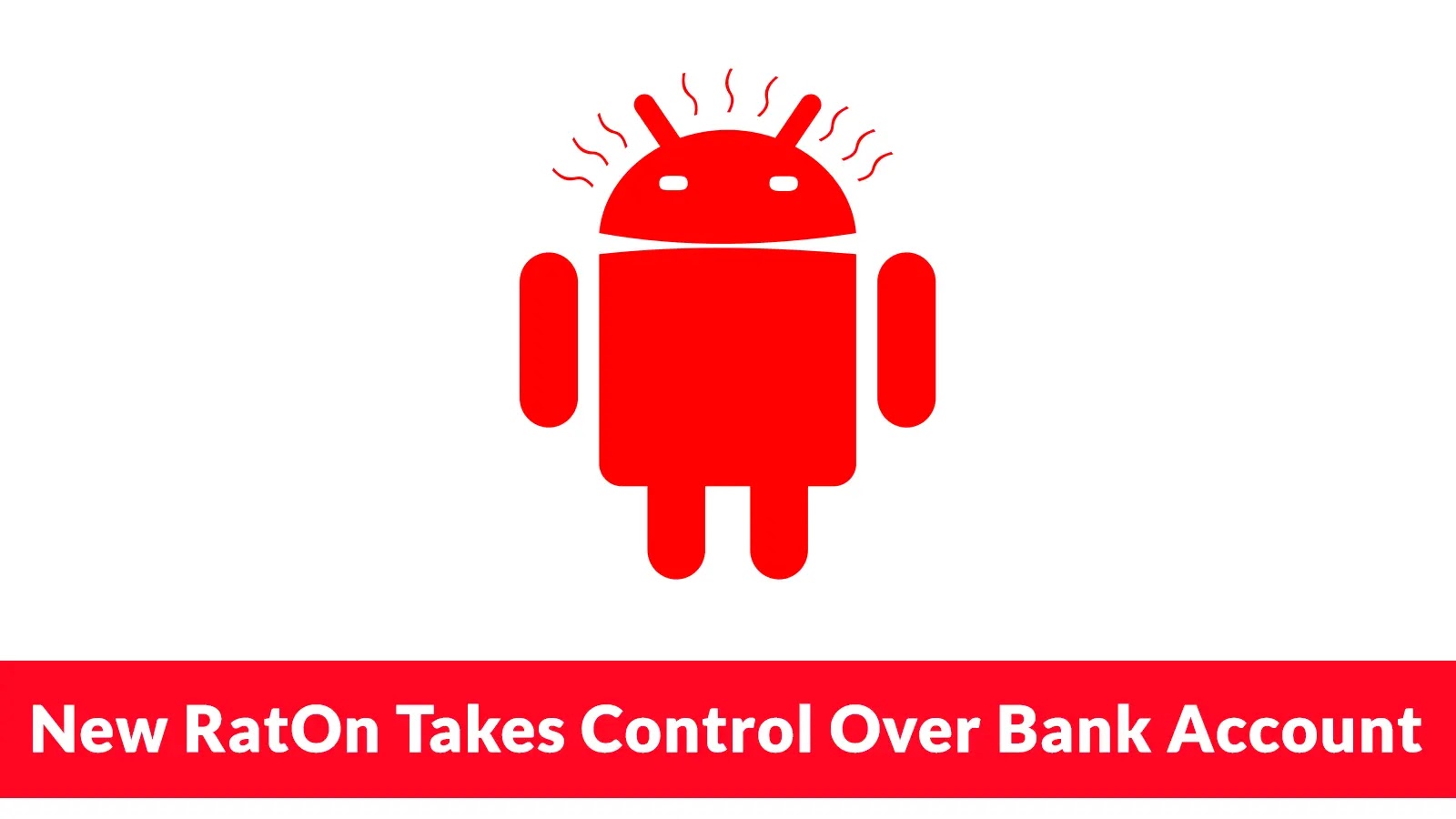
New RatOn Takes Control Over Bank Account and Initiates Automated Money Transfers
The digital financial landscape is under constant threat. Every new innovation in banking security is met with sophisticated attempts to circumvent it. Recently, a particularly insidious threat has emerged, directly targeting the sanctity of your bank accounts and the integrity of automated financial systems. Cybersecurity researchers have uncovered a novel Android banking trojan, dubbed RatOn, which is redefining the capabilities of mobile malware. This new contender seamlessly combines remote access, cutting-edge NFC relay technology, and sophisticated Automated Transfer System (ATS) functions, posing an immediate and severe risk to users worldwide.
Understanding RatOn: A Multi-Stage Threat
First detected in mid-July 2025, RatOn stands out due to its elaborate, multi-stage architecture. Unlike simpler malware, RatOn employs a dropper application as its initial vector. This dropper acts as a covert delivery mechanism, installing subsequent malicious payloads onto the target device. The ultimate objective is a complete device takeover, enabling threat actors to initiate fraudulent transactions and extract sensitive financial information with alarming ease.
The danger is compounded by RatOn’s ability to leverage several advanced functionalities:
- Remote Access Capabilities: This allows attackers to directly control the compromised device, mimicking legitimate user actions.
- NFC Relay Technology: A particularly concerning feature, enabling attackers to intercept and manipulate Near Field Communication (NFC) transactions, potentially bypassing tap-to-pay security measures.
- Automated Transfer System (ATS) Functions: This is where RatOn truly distinguishes itself. ATS capabilities allow the malware to automate the process of initiating money transfers from a victim’s account without manual intervention from the attacker after initial compromise.
The Modus Operandi: How RatOn Seizes Your Funds
RatOn’s operational methodology is designed for maximum efficiency and stealth. Once the multi-stage infection is complete and key credentials are exfiltrated, or device control is established via the remote access component, the ATS functions come into play. This means the trojan can programmatically:
- Log into banking applications.
- Navigate through financial menus.
- Initiate transfers to attacker-controlled accounts.
- Confirm transactions, bypassing multi-factor authentication where possible through relayed NFC or captured credentials.
This automated process significantly reduces the time window for detection and response, making it incredibly difficult for victims to react before their funds are siphoned away.
Remediation Actions and Protective Measures
Combating a sophisticated threat like RatOn requires a multi-layered defense strategy. Individuals and organizations alike must adopt proactive measures to mitigate the risk of infection and financial loss.
- Exercise Caution with App Downloads: Only download applications from official and trusted sources like the Google Play Store. Be wary of third-party app stores or direct APK downloads, which are common vectors for malware.
- Scrutinize App Permissions: Before installing any application, carefully review the permissions it requests. Be suspicious of apps requesting unusual or excessive permissions, especially those related to accessibility services or SMS.
- Maintain Updated Software: Regularly update your Android operating system and all applications. Software updates often include critical security patches that address known vulnerabilities.
- Utilize Robust Mobile Security Solutions: Install and maintain a reputable mobile antivirus and anti-malware solution. These tools can help detect and block malicious applications before they cause damage.
- Enable and Monitor Multi-Factor Authentication (MFA): Where possible, enable MFA for all your banking and financial accounts. While sophisticated malware may attempt to bypass MFA, it still adds a significant layer of security.
- Regularly Monitor Bank Statements: Frequently review your bank and credit card statements for any unauthorized transactions. Report suspicious activity to your financial institution immediately.
- Educate Yourself on Phishing Attempts: Many mobile malware infections begin with phishing attempts (SMSishing or Vishing). Be highly suspicious of unsolicited messages or calls that ask for personal or financial information.
- Perform Regular Backups: While not directly preventing infection, regular data backups ensure that you can restore your device to a clean state if it becomes compromised without losing valuable data.
Tools for Detection and Mitigation
For IT professionals and security analysts, leveraging the right tools is crucial for detecting and responding to threats like RatOn. While specific CVEs for RatOn are emerging and may not be publicly assigned universally yet due to its novelty, a proactive stance involves continuous monitoring and analysis.
| Tool Name | Purpose | Link |
|---|---|---|
| Virustotal | Malware analysis and threat intelligence aggregation | https://www.virustotal.com/ |
| MobSF (Mobile Security Framework) | Automated mobile application (Android/iOS/Windows) pen-testing, malware analysis and security assessment framework | https://opensecurity.in/mobsf/ |
| Androguard | Reverse engineering, malware analysis, and more for Android applications | https://github.com/Androguard/androguard |
| Mandiant Advantage Threat Intelligence | Comprehensive threat intelligence, including emerging malware families | https://www.mandiant.com/advantage |
| Endpoint Detection and Response (EDR) Solutions | Proactive threat detection and response on endpoints, many support mobile devices | (Vendor specific, e.g., CrowdStrike Falcon, SentinelOne Singularity) |
Conclusion: Staying Ahead of Mobile Banking Threats
The emergence of RatOn underscores the dynamic and escalating nature of mobile banking threats. The integration of remote access, NFC relay, and particularly Automated Transfer System functions marks a significant leap in banking trojan sophistication. Protecting your financial assets and personal data necessitates vigilance, adherence to robust security practices, and continuous awareness of the evolving threat landscape. Organizations must prioritize mobile security within their overall cybersecurity strategy, while individuals must adopt stringent personal practices to safeguard their digital wallets.





